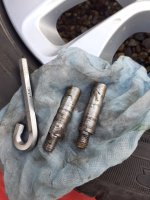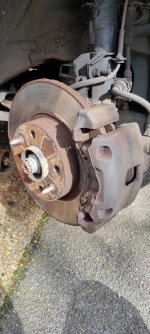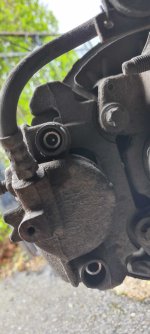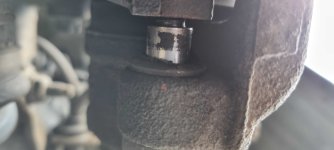cinquecento100
Member
Thanks I'll try that it does feel like it was corroded and then refused to move once unthreaded.Sounds like its undone and stuck in the rubber sleeve. You may just have the pin and holes misaligned preventing you replacing the slider pin. They can be a pain to line up. You may need to push the caliper against the springs to align the holes. Sometimes the pin is undone but does not want to clear the rubber sleeve It feels as you describe. I find you can grip the end of the pin and pull it out with fine nose pliers. You should be able to see if it is still threaded into the caliper by using a mirror on a stick to look at the back side. All is not lost if I am correct. The pins can seem quite stuck in the rubber sleeve and need a good pull to get them out. If the thread has stripped its a new caliper job. It would not be the first one to get a wrecked thread. Only use good quality brake brease to lube the pins, never copper grease.
I didn't try to unscrew or screw it in with tha spring attached though so I'll try that tomorrow.








